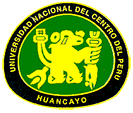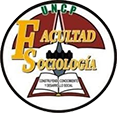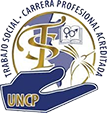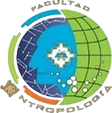Prevalence of childhood anemia and sociocultural factors of the users of the Juntos Program, Pampas District
DOI:
https://doi.org/10.26490/uncp.sl.2019.3.2.518Keywords:
prevalence of anemia, social factor, cultural factorAbstract
This research aimed to measure the level of influence of sociocultural factors of the users of the Juntos Program on the prevalence of childhood anemia at the Pampas Hospital (Tayacaja, Huancavelica). An investigation of basic type, descriptive level, transversal non-experimental design and with a quantitative methodological approach was carried out. A questionnaire was applied to 36 mothers using the Together Program; the children of 16 of these have a prevalence of anemia, and those of the remaining 16, no. At 95% statistical confidence, the results obtained were: 82% of mothers whose children have anemia are under 30 years of age; the children of 71% of mothers, who mostly come from the rural area, have a prevalence of childhood anemia; 68% of mothers have conflicts with their children's parents; Only 23% of mothers who have access to public services with drinking water are less recurrent to the prevalence of anemia; 76% of them participate in other social programs, and 77% of the same trust in the health system. It is concluded that the social factors in the users of the program together of the Pampas hospital, Tayacaja directly and significantly influence the prevalence of childhood anemia, the mother's behavior, her living conditions, the iteration with her youngest child. and with the group of personnel that socialize every day, it generates a lifestyle that does not contribute to overcoming the diagnosis of anemia and they become prevalent, directly affecting the physical and emotional development of the infant, this situation compromises its future, promoting scenario that becomes negative for human development, the generation of social capital, and consequently for social development. Cultural factors in the users of the program together at the Pampas, Tayacaja hospital directly and significantly influence the prevalence of childhood anemia, the habits and daily habits of the mother's behavior in her surroundings, the elements that guide the coexistence with her Younger child, a generates a culture of coexistence that does not contribute to the overcoming of the diagnosis of anemia but on the contrary they are presented as prevalent, this way of seeing life, the assessment of the health situation are influenced by the way If you conceive the world, your idiosyncrasy does not allow you to easily assume the situation of importance and priority of child care with eating habits and hygiene more appropriate to the treatment of childhood anemia.
References
Fernández, D. (20 de Octubre de 2017). El derecho delos niños a la salud. Guia infantil, 2. Obtenido de Guia infantil: https://www.guiainfantil.com/articulos/educacion/derechos-del-nino/el-derecho-de-los-ninos-a-la-salud/
Junco, J. (2015). Identificación de los factores que contribuyen y limitan la efectividad del programa de suplementación con micronutrientes en la reducción de la anemia de niños menores de tres años del ámbito rural de Vinchos, Ayacucho (Tesis de maestría). Pontificia Universidad Católica del Perú, Lima. Recuperada de http://tesis.pucp.edu.pe/repositorio/bitstream/handle/123456789/6650/JUNCO_GUILLERMO_JORGE_IDENTIFICACION_FACTORES.pdf?sequence=1&isAllowed=y
Juntos. (s. f.). Programa Nacional de Apoyo Directo a los más Pobres. Recuperado de https://plataformacelac.org/programa/186
Galindo, M.L. (2012). Condiciones sociales, culturales y económicas de las maras en Centroamérica. Un estudio comparativo: jóvenes y violencias en Bogotá. Revista Logos, 3 (2), 21. Recuperado el 14 de octubre de 2018, de http://www.redalyc.org/html/5177/517751762002/
Minsa. (2017). Norma técnica. Manejo terapéutico y preventivo de la anemia en niños, adolecentes, mujeres gestantes y puérperas. Lima: Minsa. Recuperado de http://www.ins.gob.pe
Oyola, A., Vilchez, A., Napanga, E., y Valdez, W. (2013). Análisis de los determinantes sociales de la salud en el Vraem. Revista Peruana de Epidemiología, 2, 02-05. Recuperado de http://www.redalyc.org/html/2031/203129459011/
Sammartino, G. (2010). Representaciones culturales acerca de la anemia y la suplementación con hierro. Arch Argent Peditr, 108, 401-408. Recuperado de https://www.sap.org.ar/docs/publicaciones/archivosarg/2010/v108n5a05.pdf



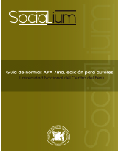




.jpg)










